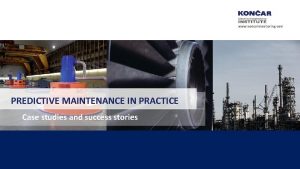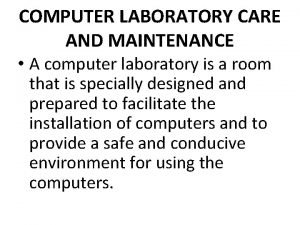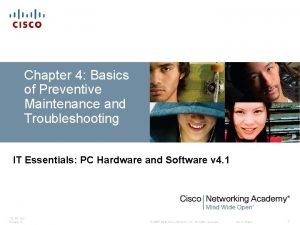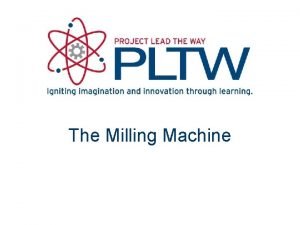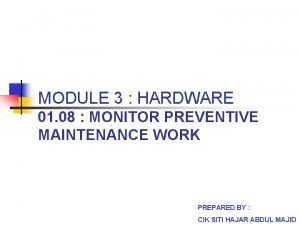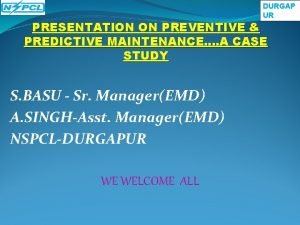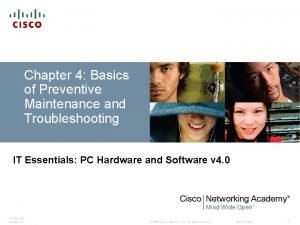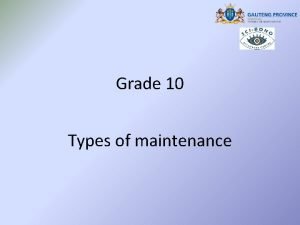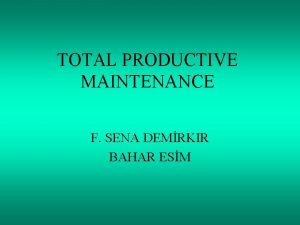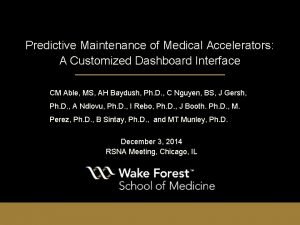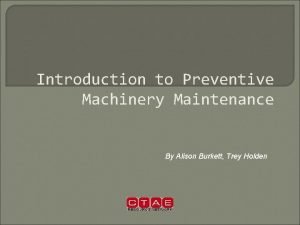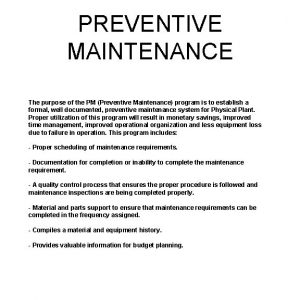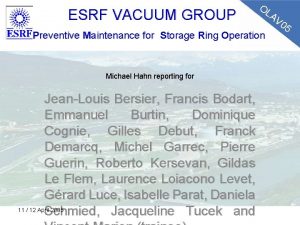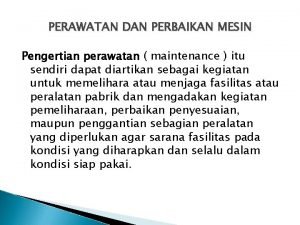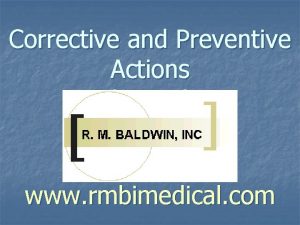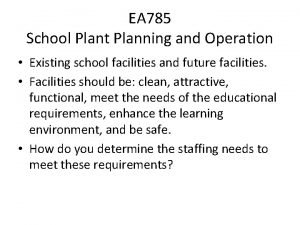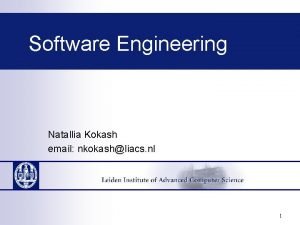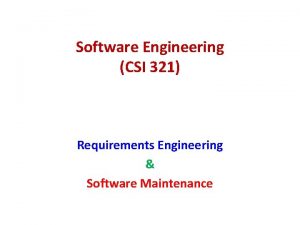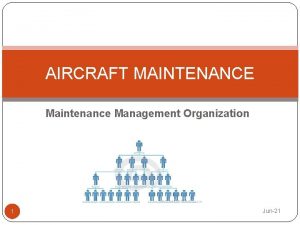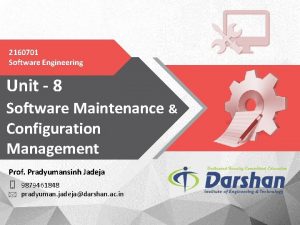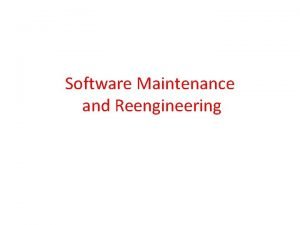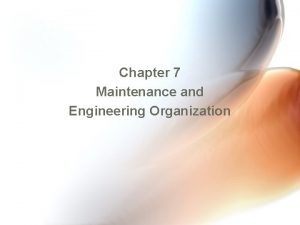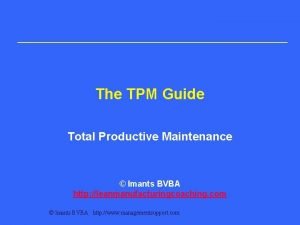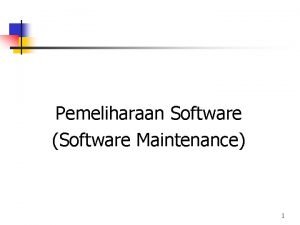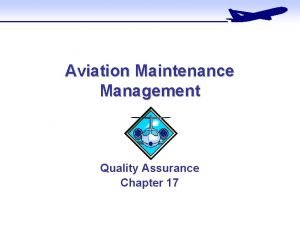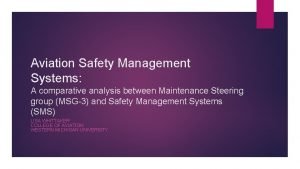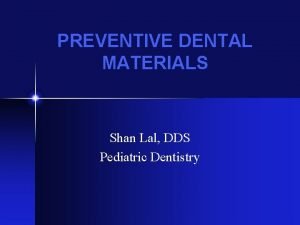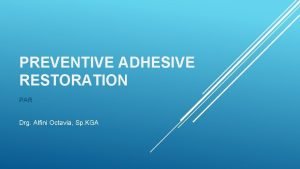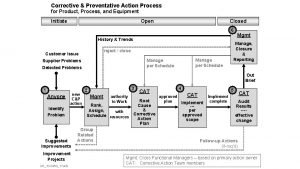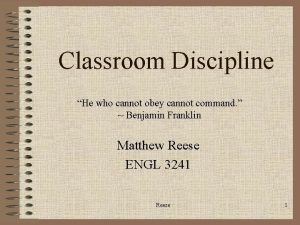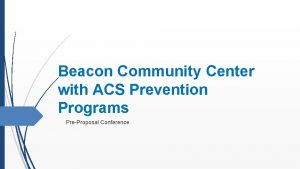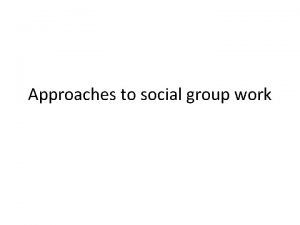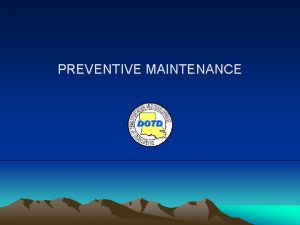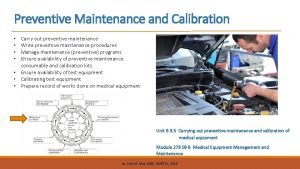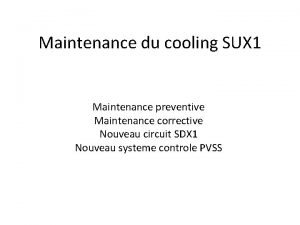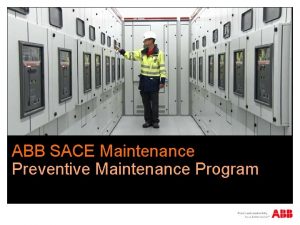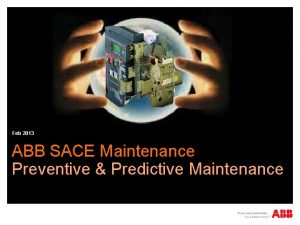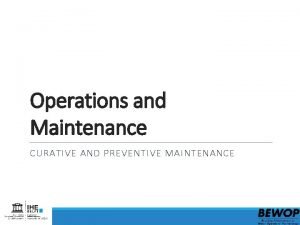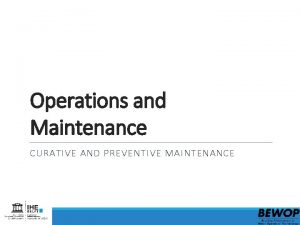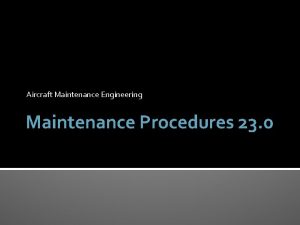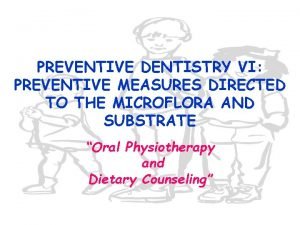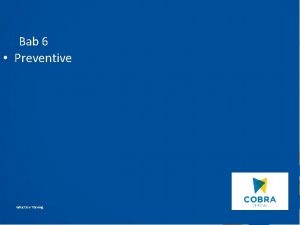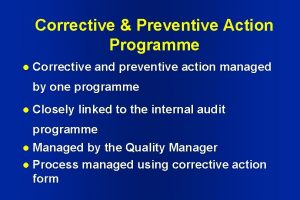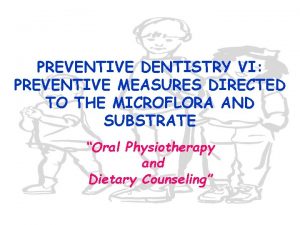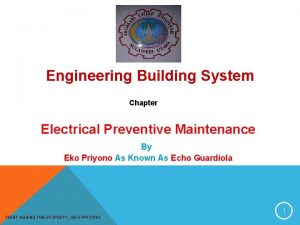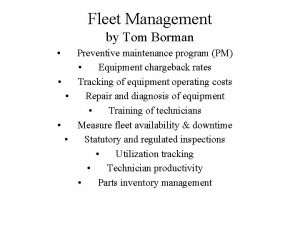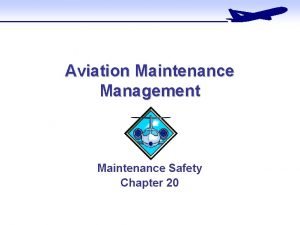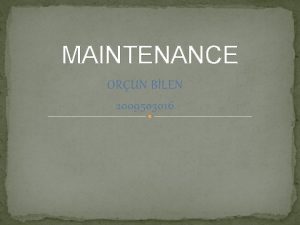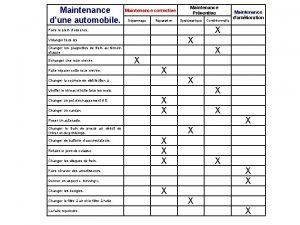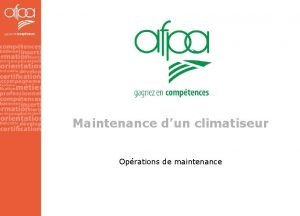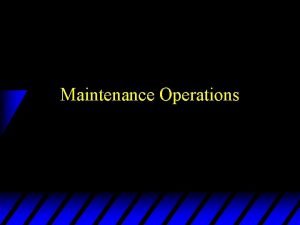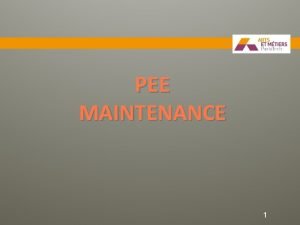ENGINEERING A PREVENTIVE MAINTENANCE PROGRAM Elements Selection of



















































- Slides: 51

ENGINEERING A PREVENTIVE MAINTENANCE PROGRAM

Elements ØSelection of pavement sections ØDesign treatment ØPreventive maintenance program ØQuality control ØMonitoring

Selection of Treatments Pavement condition v. Environmental distress v. Roughness v. Skid resistance

Distresses in Asphalt Pavement

Types of Distresses ØFatigue cracking ØRutting ØThermal cracking ØBlock cracking ØRoughness ØFrost effect ØPoor drainage effect ØWater bleeding & pumping ØStripping • Raveling • Bleeding/flushing • Polished aggregate • Slickness • Shoving • Slippage Cracking • Depression • Reflection cracking • Etc.

Fatigue Cracking Wheel load HMA s urface Base Subb ase Soil

Early Stage of Fatigue Cracking Advanced Stage of Fatigue Cracking

Fatigue Cracking

Rutting (Permanent Deformation)

Rutting

Rutting Reasons Unstable HMA Poor Compaction During Construction Poor Subgrade

Thermal Cracking

Thermal Cracking

Block Cracking

Roughness

Frost Effect Frost Heave

Poor Drainage


Water Bleeding & Pumping Depression due to Pumping

Stripping Separation of bitumen from aggregate

Raveling


Bleeding/ Flushing

Polished Aggregate

Shoving at Intersections

Shoving

Slippage Cracking Ø Poor bond between layers Ø Unstable HMA

Depression

Reflective Cracking

Reflective Cracking Mechanism

Combination of Distresses ØCombine treatments to repair all distresses ØCuring between treatments

Distress Identification Manual

Preventive Maintenance ØPreventive maintenance is not structural ØDurability is key ØDurability is related to treatment selection, material selection and proper construction

Environment Preventive maintenance is effective for correcting environmental distress • Prevents water intrusion • Renews the surface

Construction Considerations ØSpeed of construction ØLife of the treatment

Treatment Design ØNo structural design ØMaterial selection v. Aggregate characteristics v. Binder v. Quantities ØSpecifications

How effective are these treatments? ØIt depends on pavement condition ØThe better the condition before the treatment, the more effective the treatment is. ØIt varies with the type of treatment

Chip Seal Extent of Problem Distress Type Fatigue Cracking Linear / Block Cracking “Stable” Rutting Raveling Flushing/Bleeding Roughness Friction Loss Moisture Damage Shoving Minor Major Effective Marginal No Impact

Microsurfacing Distress Type Fatigue Cracking Linear / Block Cracking “Stable” Rutting Raveling Flushing/Bleeding Roughness Friction Loss Moisture Damage Shoving Extent of Problem Minor Major Effective Marginal No Impact

Milling with Thin HMA Overlay Distress Type Fatigue Cracking Linear / Block Cracking “Stable” Rutting Raveling Flushing/Bleeding Roughness Friction Loss Moisture Damage Shoving Extent of Problem Minor Major Effective Marginal No Impact

Ultrathin Bonded Wearing Course (Novachip) Distress Type Fatigue Cracking Linear / Block Cracking “Stable” Rutting Raveling Flushing/Bleeding Roughness Friction Loss Moisture Damage Shoving Extent of Problem Minor Major Effective Marginal No Impact

Cold & Hot In-Place Recycling Extent of Problem Distress Type Fatigue Cracking Linear / Block Cracking “Stable” Rutting Raveling Flushing/Bleeding Roughness Friction Loss Moisture Damage Shoving Minor Major Effective Marginal No Impact

Pavement Condition Periodic Applications Crack sealing Chip seal Time or traffic

Quality Control 1. Method or Recipe Specification (Past) 2. End Result (Quasi-Present) 3. Quality Assurance (Present) 4. Performance Based (Future? )

1. Method or Recipe Specification (Past) COUNTY CITY STATE VILLAGE Department of Transportation Library

Method Specification (continued) ØAgency defines means and methods for performing work ØSplit responsibility v. Contractor v. Agency

2. End Result Specifications ØAgency defines required properties ØContractor controls process to achieve properties ØResponsibility is contractor’s

3. Quality Assurance Specifications ØSeparates responsibility for process control and product acceptance ØEnsures that inspection plays an essential role QC n Pla

4. Performance Based Specifications ØContractor warranties performance for a specified period of time ØContractor controls design, materials, and construction

Monitoring Performance Collect Store Analyze

Monitoring Performance ØNew applications of existing methods ØApplication of emerging technology ØNeed to evaluate cost-effectiveness
 Preventive and predictive maintenance of hydro power plant
Preventive and predictive maintenance of hydro power plant Weld slag chippers and needle scalers are typically
Weld slag chippers and needle scalers are typically Corrective maintenance in computer laboratory
Corrective maintenance in computer laboratory Hardware preventive maintenance
Hardware preventive maintenance Milling machine safety checklist
Milling machine safety checklist Kebaikan preventive maintenance
Kebaikan preventive maintenance Preventive maintenance presentation
Preventive maintenance presentation Preventive maintenance and troubleshooting
Preventive maintenance and troubleshooting Preventive maintenance and troubleshooting
Preventive maintenance and troubleshooting Meaning of preventive maintenance
Meaning of preventive maintenance 16 losses in tpm
16 losses in tpm Reboph
Reboph Trey burkett
Trey burkett Preventive maintenance definition
Preventive maintenance definition Av
Av Pengertian perawatan
Pengertian perawatan Rapport de stage maintenance préventive
Rapport de stage maintenance préventive Preventive action program
Preventive action program School plant
School plant Balancing selection vs stabilizing selection
Balancing selection vs stabilizing selection Similarities
Similarities K selected
K selected Natural selection vs artificial selection
Natural selection vs artificial selection Artificial selection vs natural selection
Artificial selection vs natural selection Example of disruptive selection
Example of disruptive selection K selection r selection
K selection r selection Natural selection vs artificial selection
Natural selection vs artificial selection Two way selection and multiway selection in c
Two way selection and multiway selection in c Multiway selection
Multiway selection Mass selection and pure line selection
Mass selection and pure line selection Adaptive maintenance in software engineering
Adaptive maintenance in software engineering Software maintenance process models ppt
Software maintenance process models ppt Adaptive maintenance in software engineering
Adaptive maintenance in software engineering Aircraft maintenance management structure
Aircraft maintenance management structure Adaptive maintenance in software engineering
Adaptive maintenance in software engineering Maintenance and reengineering in software engineering
Maintenance and reengineering in software engineering Maintenance and engineering organization
Maintenance and engineering organization Total productive management definition
Total productive management definition Evolvability
Evolvability Aviation maintenance quality management
Aviation maintenance quality management Msg-3 maintenance program
Msg-3 maintenance program Regular vessel and engine maintenance program
Regular vessel and engine maintenance program Education is a matter of the heart don bosco
Education is a matter of the heart don bosco What are preventive dental material?
What are preventive dental material? Restoration par
Restoration par Monash mph
Monash mph Preventive social work example
Preventive social work example Preventive-action product
Preventive-action product Corrective discipline in the classroom
Corrective discipline in the classroom Changing trends in hospital care
Changing trends in hospital care Preventive services (acs)
Preventive services (acs) Group work meaning
Group work meaning
